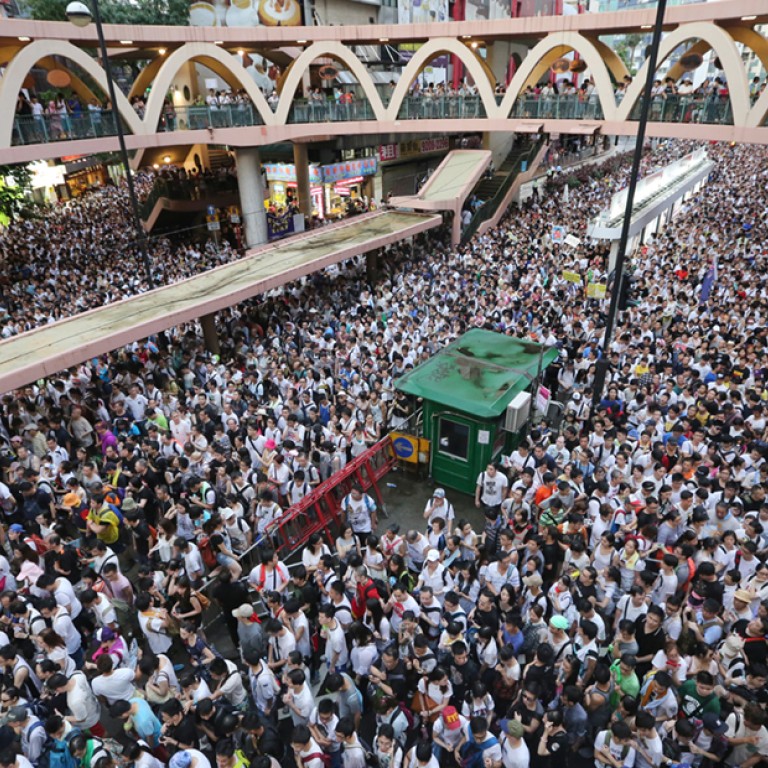
Hong Kong's credibility not served by over-the-top protest estimates
Organiser's claim 510,000 people turned out on July 1 does nothing for the city's credibility
This is the 12th year my research team has counted the number of marchers on July 1.
Our counting method, which was published in academic statistical journals, involves two counting points - at Percival Street in Causeway Bay and at Arsenal Street in Admiralty. We also interviewed a sample of marchers at Arsenal Street on whether they had crossed Percival Street.
The information gives an estimate of the number of marchers who joined in between Causeway Bay and Admiralty.
The final estimate is calculated by this formula:
N = N1 + N2 × (1 - R)
where N is the total number of marchers;
N1 is the number observed at Percival Street;
N2 is the number observed at Arsenal Street; and
R is the proportion of marchers observed in Admiralty who had passed Causeway Bay.
The on-site counts at both places throughout the course of the rally were 94,733 (N1) and 90,013 (N2), respectively, while R was 70 per cent.
That means about 27,000 joined the march somewhere after Percival Street.
The final estimate is therefore 122,000, with a confidence interval of between 110,000 and 134,000.
Of course, our method has its limitations. Participants who did not cross the two observation points would not be counted.
The police estimated 98,600 marchers at the peak of the event, without taking into account people who joined midway. The University of Hong Kong's public opinion programme observed 111,670 at Arsenal Street and adjusted that by a factor of 1.46 - based on its estimate for last year that 68.5 per cent of the protesters had crossed Arsenal Street - to give an estimate of 163,000. The counting at Arsenal Street had a variation of up to 20 per cent.
The used a combination of aerial photographs and density to yield the figure 140,000.
All the estimates fall short of the organiser's claim that 510,000 took part. To achieve that number, an average flow rate of 1,400 people per minute in a six-hour march was needed.
We had observed that the flow rate varied widely - but at no point during the whole course of the march did it exceed 500 people per minute.
Some say the number of protesters is a political rather than a scientific issue.
I would argue that if we want to show Hong Kong's maturity and superiority, it is important to demonstrate integrity in the number. We earn respect from opponents and the public by upholding our integrity. Falsifying the number does not advance our causes, especially as the organiser has used this to attack the government's integrity.
This year's march was marked by unusual delays and bottlenecks, but most of the marchers were polite, friendly and orderly, with an explicit demand for a genuine chief executive election process.
On the other hand, the organiser's insistence on having three more lanes opened was not justified, based on the number of marchers. We also need to be considerate to other road users. Frontline police officers performed their duties diligently to ensure the whole process was safe and orderly.
Marchers are not enemies with the police on the opposite side of the iron railings. Though expressing ourselves in different ways, all of us are protecting our city. It is really not necessary to shout at each other.
The city's most recent march, staged by the Voice of Loving Hong Kong on Sunday to oppose Occupy Central, claimed to have drawn 2,500 people, but the police estimated only 340.
Throughout the years, the counting exercise of my research team has been supported by a group of young people who worked tirelessly from the afternoon of the march to midnight, in order to come up with an estimate that can stand up to testing. Their volunteerism, dedication and meticulousness are much appreciated and valued.

